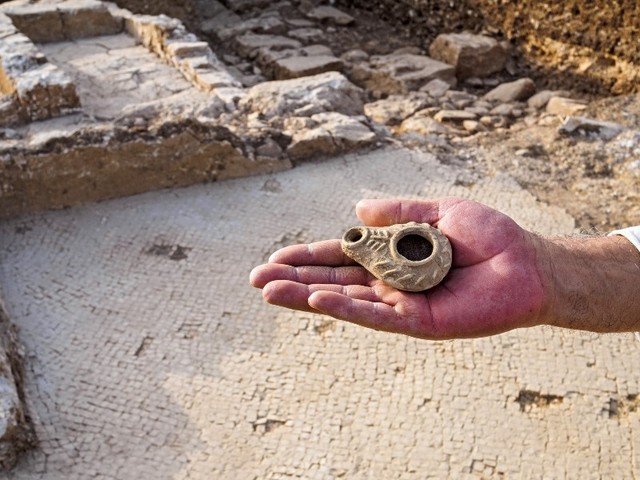Archaeological excavations near Highway 1 – at the entrance to Abu Gosh, west of Jerusalem – uncovered a large Byzantine-era road station that included a church, the Israel Antiquities Authority announced on Wednesday.
The excavations were conducted while upgrading and widening the highway between Jerusalem and Tel Aviv in a project initiated and funded by the National Roads Company, said IAA spokeswoman Yoli Shwartz.
The road station and church were found adjacent to a seep spring known as Ein Naqa'a, located on the outskirts of Moshav Bet Neqofa, said Shwartz.
“The current excavation season uncovered a church measuring about 16 m. in length,” she said.
“The church includes a side chapel 6.5 m. long and 3.5 m. wide, and a white mosaic floor. A baptismal font (bapisterium) in the form of a four-leafed clover (symbolizing the cross) was installed in the chapel’s northeast corner.”
Shwartz added that fragments of red-colored plaster found in the rubble strewn throughout the building illustrated that the church walls had been decorated with frescoes.
“To the west of the church were rooms that were likely used as dwelling quarters and for storage,” she said, noting that one of the rooms contained a large quantity of pottery tiles.
“The excavations yielded numerous different finds, testifying to intensive activity at the site,” Shwartz added. “These included oil lamps, coins, special glass vessels, marble fragments, and mother-of-pearl shells.”

According to Annette Nagar, director of the excavation on behalf of the IAA, the road station and its church were built in the Byzantine period beside the ancient road leading between Jerusalem and the coastal plain.
“Along this road, which was apparently already established in the Roman period, other settlements and road stations have previously been discovered that served those traveling the route in ancient times,” said Nagar.
“Included in the services provided along the route were churches, such as the one recently uncovered at the entrance to Abu Gosh.”
She added that other churches have been discovered in the past in Abu Gosh, kiryat Ye‘arim, and Emmaus.
“This road station ceased to be used at the end of the Byzantine period, although the road beside which it was built was renewed and continued to be in use until modern times,” said Nagar.
IAA district archeologist for Judah, Pablo Betzer said the findings have been documented and will be closely studied. He added that the IAA and National Roads Company will work together to preserve the site for future generations.